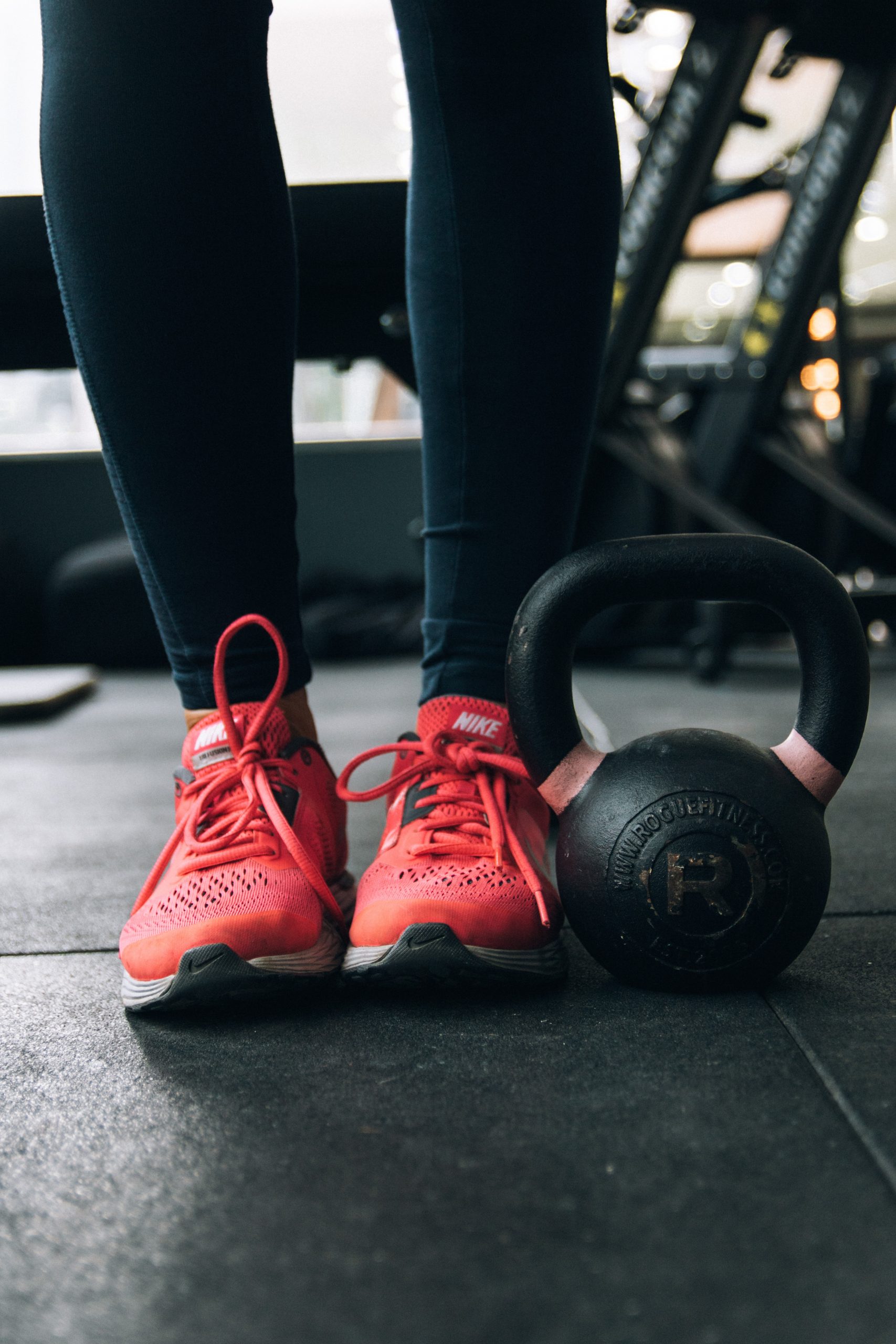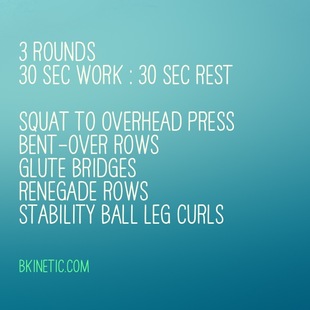What if I told you that you can get amazing results in as little as 30 minutes 3 times a week? If your response is to roll your eyes in disbelief, I don’t blame you.
We’ve been bombarded by the media with promises of 6-pack abs in only 8 minutes a day, thinner thighs in just 2 weeks, and the perfect bikini body with no effort involved if you just buy this pill. We’ve become extremely skeptical of such claims, and with good reason. We know that it takes real effort and sweat equity to build the body of our dreams. There are no shortcuts.
But there is a difference between working harder and working smarter.

A common response to weight gain is to try to overhaul our lives overnight, doing as much exercise as we can fit possibly fit into our schedule. If a little is good, then a lot must be better, right?
Not necessarily.
Doing too much activity can lead to increased cravings and appetite, injury, and impaired recovery. Exercise (along with cutting calories) is a stress on the body. Even though it’s a good stress, it still affects the body in much the same way as the bad stuff we associated as stress (deadlines at work, relationship conflicts). Adding large amounts of exercise and a significant caloric deficit to a busy work schedule and overwhelming family obligations can be a recipe for disaster.
And as we get older, our bodies are less able to handle it. What we got away with in our early twenties crushes us in our 30s and beyond. There are greater repercussions to abusing our bodies and minds. Getting sick or injured impacts our everyday lives more than before. We have more responsibilities that we can’t afford to skip out on.
So what is the answer to finding that elusive balance in the level of stress and stimulus to get the results that we desire?
Short, intense workouts.
We now know that you don’t have to spend 90+ minutes in the gym every day to get the results you want. Of course, there may be certain goals that would require that level of training, but for the everyday person just looking to lose weight, build muscle, and feel great, they are not necessary, and may even be detrimental.
Ain’t nobody got time for that.
I’m a big fan of shorter, yet intense workouts. Some days I do spend quite a bit of time in the gym, but it’s because I enjoy it, my body can handle it that day, and/or my goals require it at the time. But other times, like right now when my life is getting a little more hectic and draining, I like being able to get in and get out of the gym quickly and move on with the rest of my day. It’s especially helpful on those days when I feel so unmotivated to train. Knowing that I only have to work for 15-30 minutes helps me to put on my sneakers and get out the door.
The benefits don’t stop there though. Check these out:
Benefits of Short, Intense Sweat Sessions:
- It fits in your busy schedule. Whether you perform your workouts during your lunch hour or while the kids are napping, you get the benefit of a solid effort in minimal time.
- You avoid unnecessary soreness and fatigue. The quality of your workout shouldn’t be measured by how sore it makes you and how exhausted you feel at the end. Again, it’s a fine line between optimal and too much or too little. Finding your version of the minimum effective dose is the key. Sure, you should experience some level of soreness and tightness from time to time (especially at the beginning), but you shouldn’t be crushing yourself every single session. That leads to injury, illness, and burn-out.
- Better recovery, allowing you to kill your next workout so you can get the most out of each and every session. If you’re so sore, tired, or otherwise impaired that you have to skip a workout or half-ass it, then you’re not doing yourself any favors.
- Less risk of rebound hunger or cravings, otherwise known in the running community as “runger,” a state of intense and insatiable hunger that kills every ounce of willpower. And you may have heard of another term: “hangry,” where you’re so hungry that it’s making you angry and emotional. Intense hunger and cravings can lead to overeating and completely wiping out all your hard work that day and possibly beyond.
- Easier to stay on track with your workouts during busy times at work or school, while traveling, or during the holidays.
- Get in, get out. More free time to pursue other hobbies and interests or to spend with friends and family. Use it to rest and recover!
- The afterburn effect, otherwise known as EPOC (excess post-exercise oxygen consumption). High intensity workouts, especially ones using weights, boost metabolic rate for hours after the training session ends, leading to greater overall calorie burn for the day and then some.
The research has supported this mechanism over and over. One such study pitted two groups of exercisers against each other, with one group doing 20 weeks of endurance training versus a group doing 15 weeks of interval training. The endurance group burned a total of 28,661 calories in 20 weeks. The interval group burned less than half of that — 13,614 calories in 15 weeks — but exhibited 9x greater fat loss than the endurance group (when corrected for energy cost). NINE TIMES more fat loss in LESS time. This is excess post-exercise oxygen consumption (EPOC), and the accompanying hormonal changes, in action.
According to a study in the European Journal of Applied Physiology in 2002, a circuit training protocol (weight training using moderate weights with little rest, going from exercise to exercise quickly) resulted in an elevation in EPOC for 38 hours following the workout.
While longer, less intense workouts have their place within an intelligent program for various goals, shorter, more intense workouts can boost your results, ward off burn out, and aid in creating a sustainable, healthy lifestyle. Along with sound nutrition, quality sleep, and stress management, you can build the body of your dreams in less time you ever thought possible.
Try out this metabolic resistance training workout below to see what I mean. It’ll only take you 15 minutes (not including a short warm-up) to complete, but get your muscles burning and leave you breathing hard. Use good form throughout the work period and earn your rest.
Intensity is relative. If you’re just starting out, keep the intensity a little lower, like a 5 or 6 out of 10 (breathing hard, but can still speak in short sentences) and only complete 2 rounds. If you’re more advanced, push yourself to an 8 or 9 level (not quite maximal effort). Use a lighter to moderate weight set of dumbbells, and be sure to drink plenty of water between sets. Stop if you feel dizzy, nauseous, or lightheaded.

